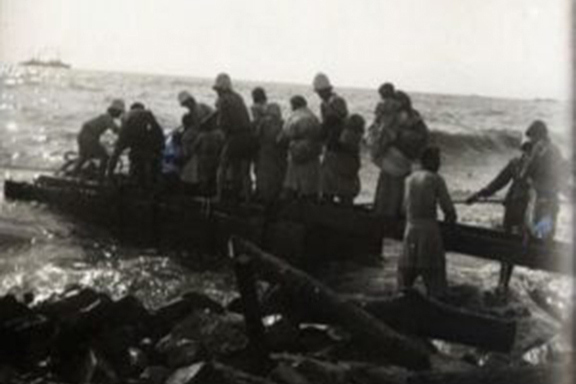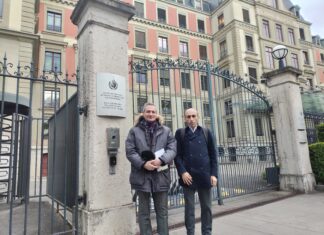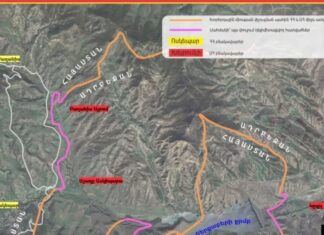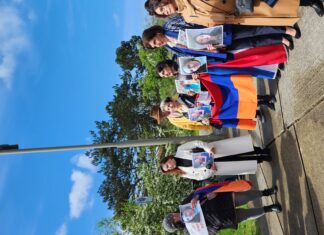By Vahram L. Shemmassian, Ph.D.
The first anniversary of the Musa Dagh resistance to the Genocide was marked in 1916 at the Armenian refugee camp of Port Said, Egypt, which was established the year before to shelter the Armenian highlanders from Musa Dagh after their rescue by the French navy. When the refugees returned home by fall 1919, regional insecurity prevented them from marking the saga with public grandeur till 1924. Each year thereafter, through 1938, commemorative events took place at Damlajik, where a pile of rocks had served as a makeshift altar during the actual fights. For about eight years Holy Mass was celebrated at this site, and requiem for the repose of those who had fallen on the battlefield was conducted in a nearby plot, where wooden crosses were stuck into the ground. But in 1932, this temporary arrangement was replaced with a more fitting, fenced graveyard that included 18 tombstones, each inscribed with the name of a fallen fighter.
The celebrants, including natives and visitors from Aleppo, Beirut, Egypt and elsewhere alike, congregated at Damlajik from Saturday till Sunday afternoon, making their way on foot from the villages below in several hours through difficult terrain. Upon arrival, they pitched tents or stayed in the open, hoisted the Armenian and French tricolors, and indulged themselves in feasting, launching fireworks, singing, dancing, reciting poetry, and reminiscing myriad details pertaining to the resistance. Sunday morning was reserved for the official program consisting of liturgy, requiem, and speeches by Armenian and French dignitaries. The organizers similarly sent telegrams to the French Minister of the Marine and the High Commissioner of Syria and Lebanon to express their appreciation and gratitude for the French goodwill vis-à-vis the Armenians of Musa Dagh.
In 1924, the Armenian Revolutionary Federation (ARF) of Musa Dagh decided to erect a memorial monument and accordingly formed a committee chaired by Sarkis Tosunian, a party member, resistance fighter, and veteran of the Légion d’Orient. However, the project remained unrealized for the next eight years for lack of funds.
In September 1930, on the 15th anniversary of the resistance, Paul Baurain, a French teacher in Aleppo, delivered an impassioned speech at Damlajik. Afterwards, his wife recited a seven-verse poem written by him while in Bitias, one of the six Armenian villages of Musa Dagh. Titled “The Mountain and the Sea,” it said, in order “to win the battle” the Armenians had two allies: the mountain and the Mediterranean Sea, aided by French battleships and the Tricolor. The poem then proclaimed: “Djébel Moussa! Your name has entered history.” Madame Baurain hoped that with her husband’s address emanating “from the heart” as well as the poem she delivered, people would now contribute to the monument fund.
This appeal must have been in sync with a fund-raising drive launched in France. On July 1, 1931, Charles-Diran Tekeian – who in 1915 was a 28-year-old 2nd Class Auxiliary Officer-Interpreter on the French warship Desaix and had participated in the Musa Dagh rescue operations – announced in the French-Armenian monthly Le Foyer that the people of Musa Dagh had asked him “to one more time become their spokesperson and their advocate” in opening a “subscription,” which would make Musa Dagh “the first page of a new history of the regenerated Armenian Rupenids and Latin Lusignans [royal dynasties of Cilicia].” The highlanders would thus “be able to think about the sacrifices of their elders and the peasant priests will thank God in his house [i.e., church], their saviors [the French] and our subscribers [i.e., donors] forever and ever.”









